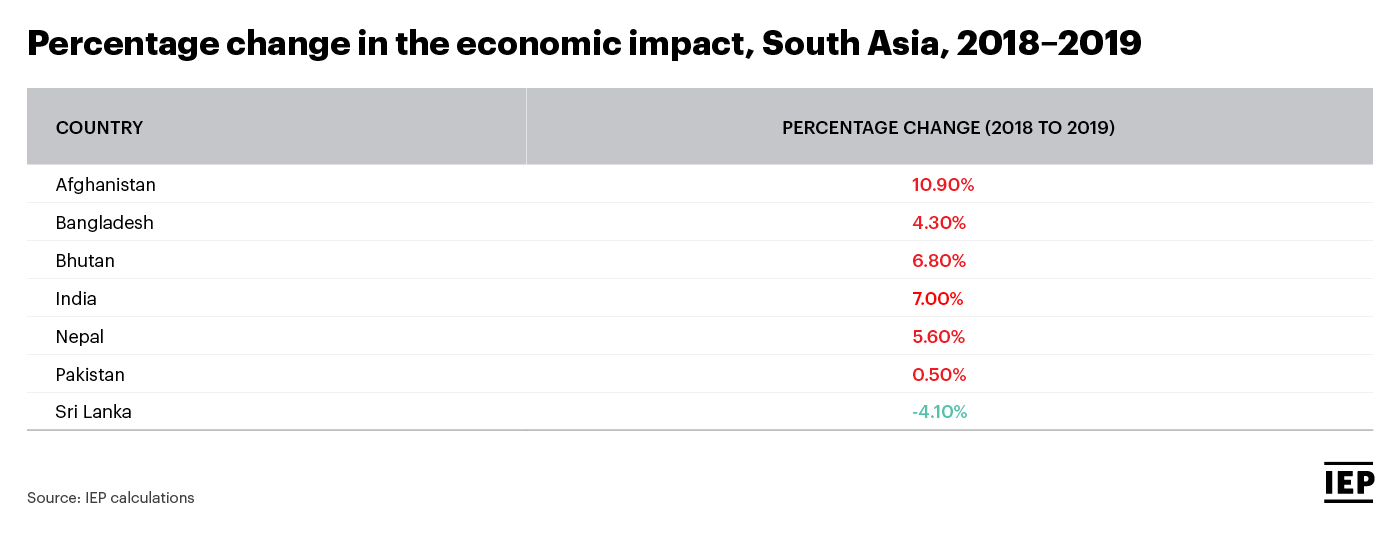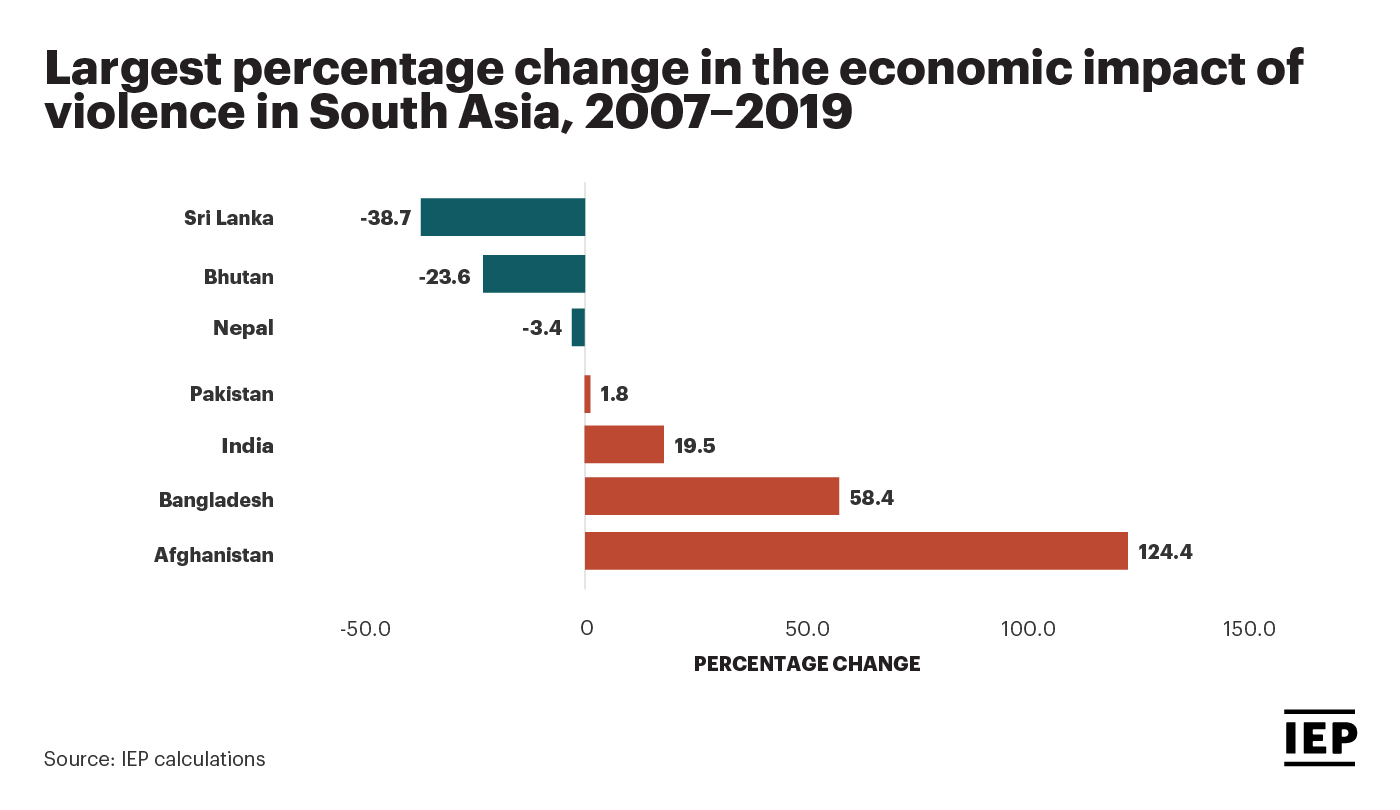In the South Asia region, the economic impact of violence rose 6% to reach $1.27 trillion in 2019, the highest level ever recorded for the region.
The 2021 Economic Impact of Violence report found that since 2013, the economic impact of violence in South Asia has increased almost every year.
The South Asia region consists of Afghanistan, Bangladesh, Bhutan, India, Nepal, Pakistan and Sri Lanka.

The region is the second least peaceful after the Middle East and North Africa and has one of the widest disparities between its most and least peaceful countries.
In the 2020 Global Peace Index, South Asia deteriorated in peace owing to falls in peacefulness in Nepal, Sri Lanka, and Afghanistan. Afghanistan is once again the least peaceful country globally; a position it has held the last two years.
The economic impact of violence in the South Asia region is largely due to military and internal security expenditure and costs arising from armed conflict and terrorism.

India accounts for 77.9 per cent of the region’s total economic impact of violence, reflecting its size and role as a major power in the region. Therefore, regional changes in the economic impact of violence are generally dominated by changes in India’s impact.
The economic impact in India amounted to $991.2 billion in 2019, of which more than 75% was military and internal security expenditure.
The 2021 Economic Value of Peace report shows that the global economic impact of violence is estimated to be $14.4 trillion.
In addition to causing suffering, interpersonal violence, social unrest and collective violence hinders productivity and economic activity, destabilises institutions and reduces business confidence.
Violence disrupts the economy, resulting in adverse and ongoing negative effects even after conflict subsides.